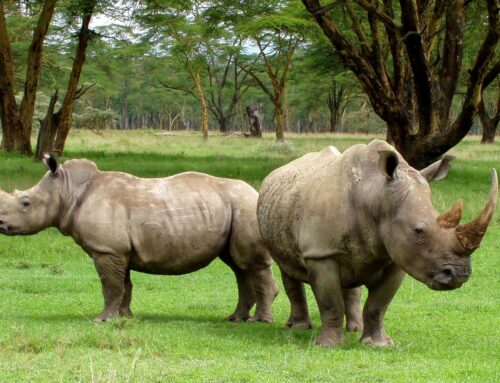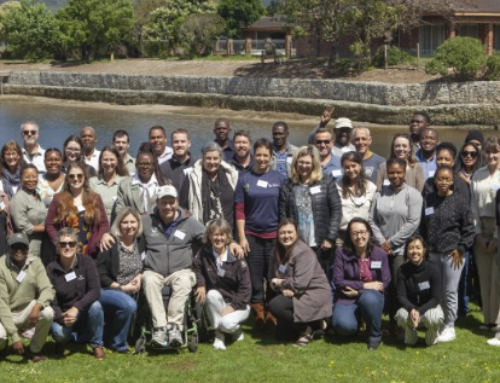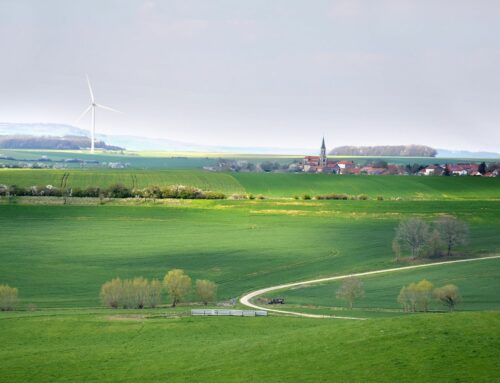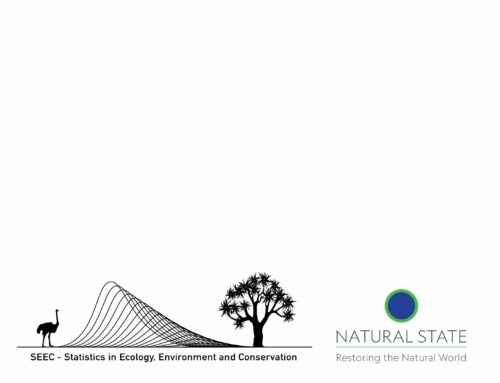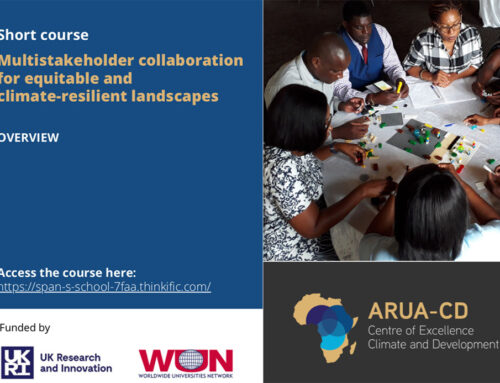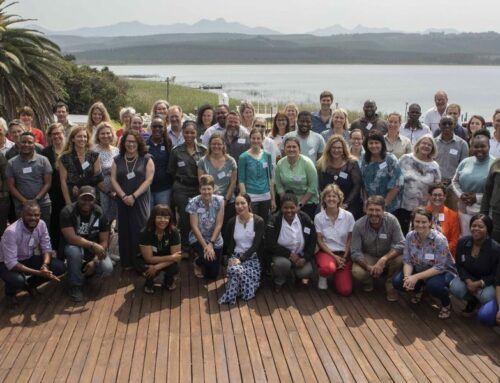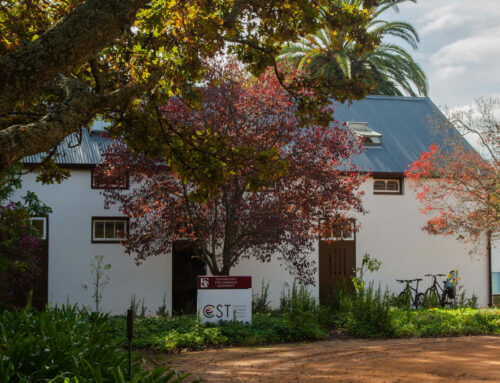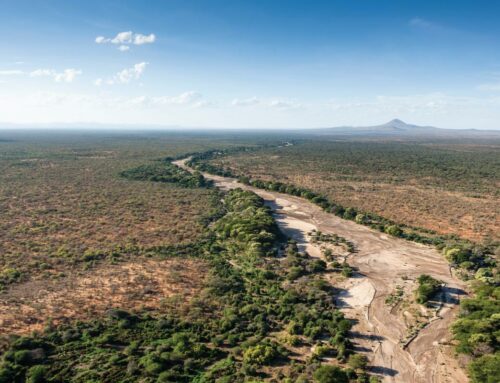Project background
The Limpopo River Basin is a complex transboundary system that supports more than 18 million people across the riparian states of Botswana, Mozambique, South Africa, and Zimbabwe. Most of this population is rural and poor, and heavily dependent on subsistence agriculture. The basin is an important agricultural area, has extraordinary mineral resources, is exceptionally rich in biodiversity, supports a significant tourism industry, and contains major urban and industrial centres. The system comprises biophysical and human sub-systems and drivers, all of which interact to present a composite picture of vulnerability. As the Limpopo River Basin approaches water resources closure (i.e., there is no more water left to allocate), choices need to be made about the future management of this river basin system, and decisions need to be taken, at a transboundary level, on actions that will promote resilience.
The Okavango River, which flows from the Angolan highlands, through north-eastern areas of Namibia, and into the Okavango Delta in northern Botswana, is home to more than 1 million people, where poverty is prevalent. The Okavango River ends in one of the world’s few endorheic deltas (i.e., a closed drainage basin that retains water and allows no outflow), that has been relatively un-impacted by human activity. The Okavango River Basin is recognised as an internationally important site of biodiversity and biological production, hosting two Ramsar sites (i.e., wetlands of international importance), with the Delta itself being a UNESCO Heritage site. However, the basin is experiencing increasing urbanisation associated with population growth and a lack of alternative livelihood options. Angola recently emerged from a civil war, where most people had sought refuge in the capital city, Luanda. With the war now over, plans to resettle in areas such as the Okavango are advanced, and is likely to increase pressure on its natural resources. Increased urbanisation and pressure to resettle will lead to increased demand for services such as water supply and sanitation, which if not regulated, could lead to increased water pollution.
The Resilient Waters Project, funded by USAID Southern Africa, aims to build more resilient and water secure Southern African communities and ecosystems through improved management of transboundary natural resources and increased access to safe drinking water and sanitation services. To achieve this objective, Resilient Waters collaborates with regional institutions, including river basin organisations (RBOs) and Transfrontier Conservation Areas (TFCAs), to examine the critical intersection of social-ecological systems. Resilient Waters focuses on the Okavango and Limpopo river basins, with the aim of improving transboundary water security, increasing access to safe drinking water, strengthening ability of communities to adapt to climate change, and conserving biodiversity and ecosystems.
Opportunity for Masters student
Land use/land cover (LULC) constantly changes due to anthropogenic and natural phenomena. LULC changes in Africa are high due to high population growth and over exploitation of natural resources. Government policies, market forces, natural hazards and local land husbandry practices are some of the factors that influence changes in land use. Monitoring of LULC changes is essential because of the global environmental threats that they often pose. LULC dynamics have important implications for changes in climate, ecosystem service, soil erosion, sustainable food production, and water resources. LULC change dynamics can cause alterations of rainfall-runoff characteristics of basins, thus disturbing hydrological and sediment regimes. LULC change studies are therefore advantageous for the sustainable development agenda.
The use of geospatial techniques, such as remote sensing and geographical information systems (GIS), are crucial to the study of complex environmental interactions between natural and social systems, and has been used widely to quantify and map ecosystem properties and functions and infer ecosystem processes through a combination of datasets. The use of geospatial techniques can help to understand the impact of LULC change dynamics on water resources and food production in transboundary catchments. While geospatial techniques may not be adequate to investigate all aspects of water resources and agricultural production, information derived from remote sensing can be coupled with GIS and social surveys to support evidence-based decisions that can inform transboundary catchment management and policy formation for resilient water resources management and sustainable food production.
Call for applications
We seek a motivated individual to undertake a 2-year research Masters using geospatial techniques to investigate the impact of LULC change on the state of water resources in the Okavango basin, or the impact of climate variability and LULC on agricultural production in the Limpopo basin. The successful candidate will be registered at Stellenbosch University and supervised by Dr Mashimbye in the Department of Geography and Environmental Studies at Stellenbosch University. The student will be co-supervised Dr Luvuno or Dr Waddell from the Centre of Complex Systems in Transition (CST) at Stellenbosch University. Degrees will be registered within the Department of Geography and Environmental Studies at Stellenbosch University. Successful candidates are expected to commence their degree at Stellenbosch University in January 2020.
Interested individuals should have a strong remote sensing and GIS background and quantitative analytical skills. Experience in using remote sensing for LCLU change mapping, and conducting field work and image processing are required. Candidates must have a keen interest in social-ecological systems and resilience thinking, and enjoy collaboration. The candidate should be an independent thinker and have an interest in inter-disciplinary approaches to research. Candidates will be expected to publish at least one article in a peer-reviewed journal during the course of the 2-years Masters degree.
Bursary value
Masters full-time over 2 years: R100 000 p.a., excluding field costs.
Requirements
Applications are invited from Southern African nationals from the following countries: Angola, Botswana, Lesotho, Mozambique, Namibia, South Africa, Zambia, and Zimbabwe.
All students applying for a Masters degree should have completed a three-year undergraduate degree and one-year Honours degree, or equivalent to be eligible. All candidates should show evidence of strong scholarly performance and commitment to publishing. Stellenbosch University will only accept students who meet the minimum academic requirements from recognised higher education institutions.
Students need to be able to communicate and write in English. Preference will be given to students who can work independently, are well organised, and who will be willing to participate in the regular activities of the Department of Geography and Environmental Studies and the CST at Stellenbosch University.
To apply
Interested candidates should send electronically:
- a motivation letter detailing why you are well-suited to undertake this project, including your previous experience, your general area of interest, as well as your specific interest in this project and project-related ideas,
- a 2-page CV that includes your academic record, previous work experience, any scientific publications on which you have been an author, and the names and contact details of at least two academic referees,
- transcripts of university-level academic qualifications,
- at least one example of recent written work (e.g. a paper, report, or thesis chapter).
Applicants possessing the prescribed minimum qualifications are invited to submit the above required documents electronically with a subject line “Geospatial Science Masters research” to Dr Waddell at CST: joywaddell@sun.ac.za.
We encourage you to submit your application as soon as possible, but latest by Monday 30th September.
CST and Stellenbosch University reserves the right to not fill the post if there are no suitable candidates who meet the requirements.



